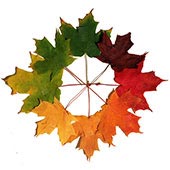Common Juniper – Juniperus communis ‘Cracovia’
 This Polish Common Juniper at the Morton Arboretum is 25 years old
This Polish Common Juniper at the Morton Arboretum is 25 years old
Common juniper is possibly the most widely distributed tree in the world [1]. It is known variously by over 150 common names, based on naming clones as varieties. Common juniper is highly valued as an ornamental, provides good ground cover even on stony or sandy sites. This species was first cultivated in 1560. This circumboreal species occurs across North America, Europe, northern Asia and Japan. Common juniper is almost completely circumpolar within the exception of a gap in the Bering Sea region. It is widespread in North America beyond the northern limit of trees, occurring from western Alaska and British Columbia to Newfoundland, Greenland, and Iceland. Common juniper extends southward through New England to the Carolinas and westward through northeastern Illinois, Indiana, northern Ohio, Minnesota, and Nebraska to the western mountains of Washington, California, Arizona, and New Mexico [2].

Common juniper is a native, evergreen shrub or columnar tree. Throughout most of North America, common juniper most often grows as a low, decumbent mat-forming shrub reaching up to 4.9 feet (1.5 m) in height and 7.6 to 13.1 feet (2-4 m) across. In parts of New England common juniper occasionally grows up to 25 feet (7.6 m) in height, and a treelike growth form is reportedly common in Europe. Height at maturity can range from 2 to 50 feet (0.6-15.3 m). At polar limits, common juniper grows as a dwarf shrub in forest tundra.
The bark of common juniper is thin, shreddy or scaly, often exfoliating into thin strips. Twigs tend to be yellowish or green when young but turn brown and harden with age. Leaves are simple, stiff and arranged in whorls of 3. Younger leaves tend to be more needlelike whereas mature leaves are scalelike [2].
Family Cupressaceae – Arborvitae, Cedar, Cypress, Juniper, Redwood
Trees Index | Pine Family | Beech, Oak | Nut Trees | Birch Family | Magnolias
Tree Encyclopedia / North American Insects & Spiders is dedicated to providing family-friendly educational
resources for our friends around the world through large images and macro photographs of flora and fauna.

